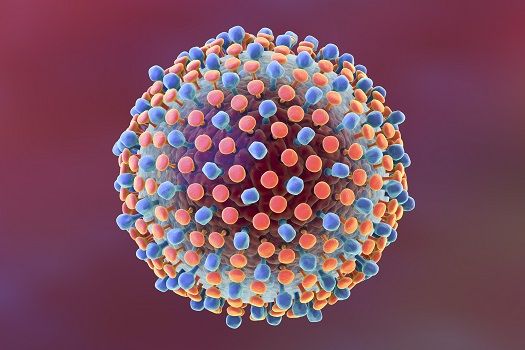Hepatitis C Genotype 3 Treated with Shortened Glecapravir/Pibrentasvir
Analysis of data from phase 2 and 3 trials supports an HCV genotype 3 indication for glecaprevir/pibrentasvir, and confirms its efficacy over 8 weeks.

An integrated analysis of data pooled from phase 2 and 3 trials supports the approved indication of glecaprevir/pibrentasvir (G/P) for hepatitis C virus (HCV) genotype 3 (GT 3) and confirms the efficacy of a shortened, eight-week duration of treatment in absence of cirrhosis.
Lead author of the analysis, Steven Flamm, MD, Northwestern Feinberg School of Medicine, Chicago, IL, explained to MD Magazine® that chronic HCV GT3 is common worldwide and that the prevalence in the US is increasing with the sharing of needles in the current opioid epidemic. He indicated that most of the infected individuals are treatment naïve and non-cirrhotic.
"Unfortunately, for unclear reasons, HCV GT3 is the most difficult to eradicate with direct acting antiviral (DAA) regimens," Flamm explained. "G/P is the only regimen that has been approved to treat treatment naïve, non-cirrhotic patients for 8 weeks, yet there has been some trepidation regarding this short course for the difficult GT3 population."
Flamm and colleagues undertook the integrated analysis of pooled data from 5 separate phase 2 or 3 trials to better characterize the basis for the approved indications for 8 weeks of treatment of HCV GT3 in treatment naïve, non-cirrhotic patients, as well as for the 12-week regimen for treatment naïve patients with compensated cirrhosis, and 16 weeks for patients who had failed previous treatment other than with NS3/4A protease inhibitor or NS5A inhibitor alternate.
The trials comprised 693 patients with GT3 infection. The majority (502, 70%) were treatment naïve and without cirrhosis, and received either 8 weeks of G/P treatment (n= 208) or 12 weeks (n= 294). Forty-nine and 22 treatment-experienced patients without cirrhosis received G/P for 12 and 16 weeks, respectively. Fifty-one treatment-experienced patients with compensated cirrhosis received G/P for 16 weeks.
Patients enrolled in EXPEDITION-2, MAGELLAN-2, and EXPEDITION-4 were co-infected with HIV-1, post-liver or kidney transplant recipients, or had stage 4 or 5 chronic kidney disease, respectively. No patients in the trials had hepatitis B virus coinfection or multiple genotypes of HCV.
The primary efficacy measure in each trial was sustained virologic response (SVR) at end of treatment, corresponding to HCV RNA less than the lower limit of quantification. Treatment-emergent adverse events were collected from the first day of treatment until 30 days after the last dose, with the study investigators determining whether an adverse event was related to the active treatment.
Flamm and colleagues reported that their analysis (intent to treat) in this robust patient population confirmed the labeled indication for 8 weeks of G/P, with an SVR rate of 95% in 208 non-cirrhotic, treatment naïve patients receiving 8 weeks of treatment matching the 95% SVR rate in 69 patients receiving the 12-week regimen. They found no factors which predicted relapse.
In addition, they reported a 95% SVR rate in 22 treatment experienced, non-cirrhotic patients, and a 94% SVR rate in 51 treatment-experienced patients with cirrhosis from the 16-week regimen. No serious adverse events were attributed to G/P, and adverse events leading to discontinuing G/P were rare (<1%).
"This report provides further evidence to support an 8-week regimen for treatment naïve, non-cirrhotic HCV GT3 patients, an increasingly common problem, and do so with confidence," Flamm said.
The study, "Glecaprevir/Pibrentasvir in patients with chronic HCV genotype 3 infection: An integrated phase 2/3 analysis," was published online in the Journal of Viral Hepatology.